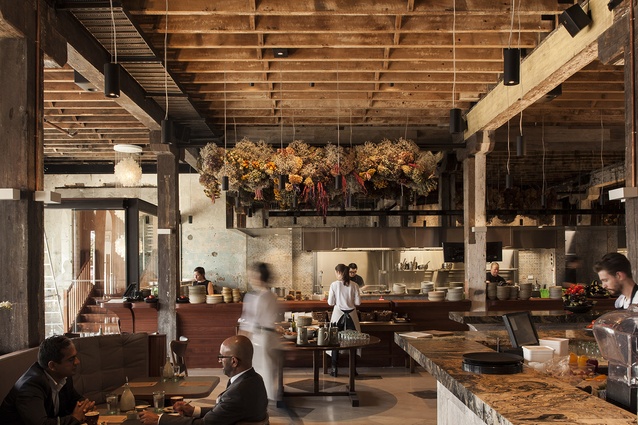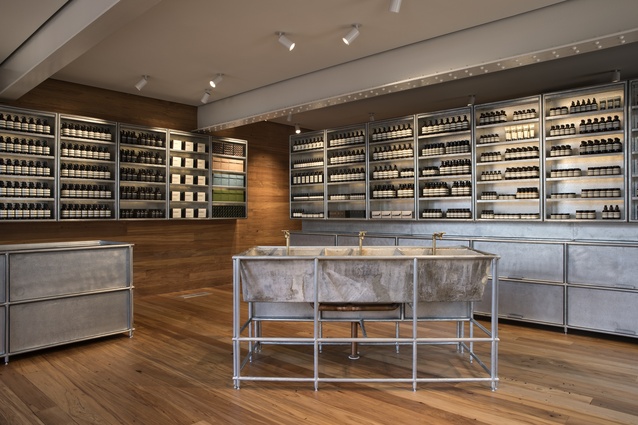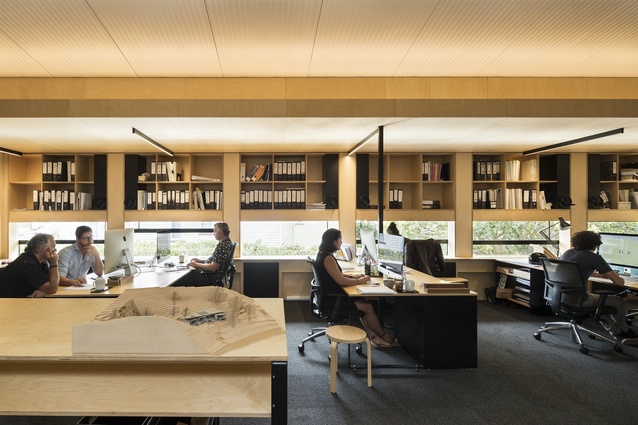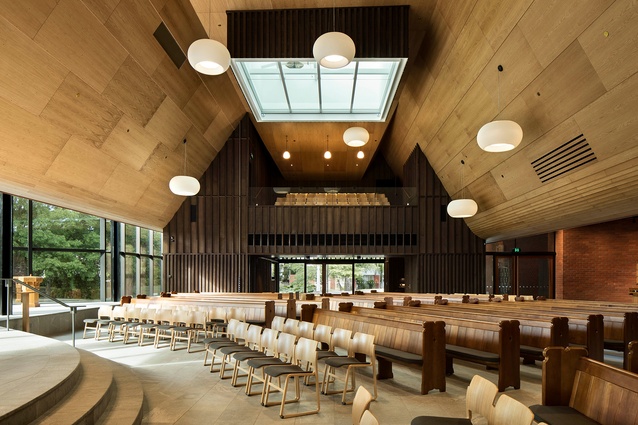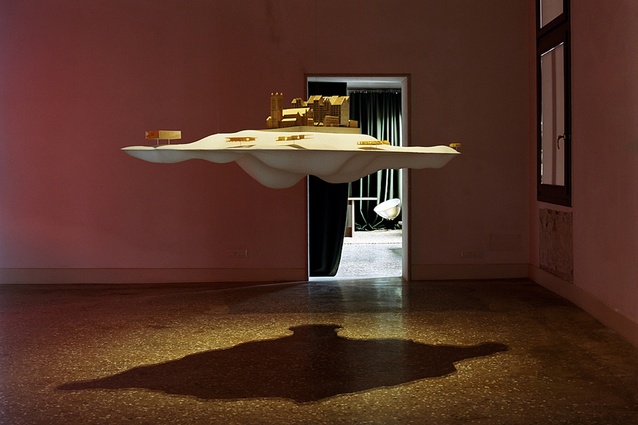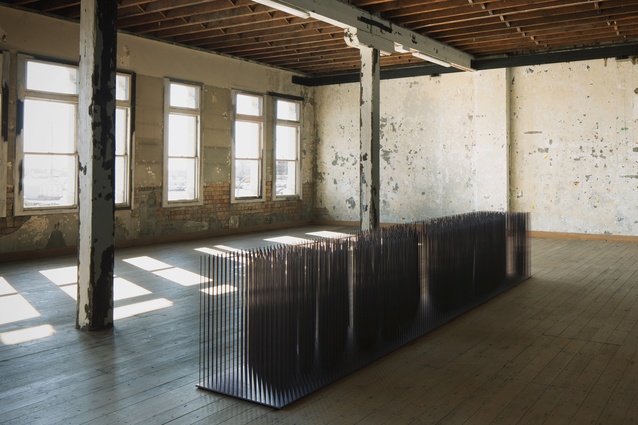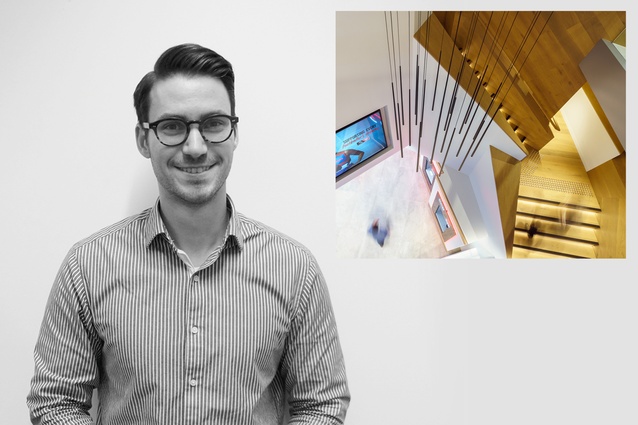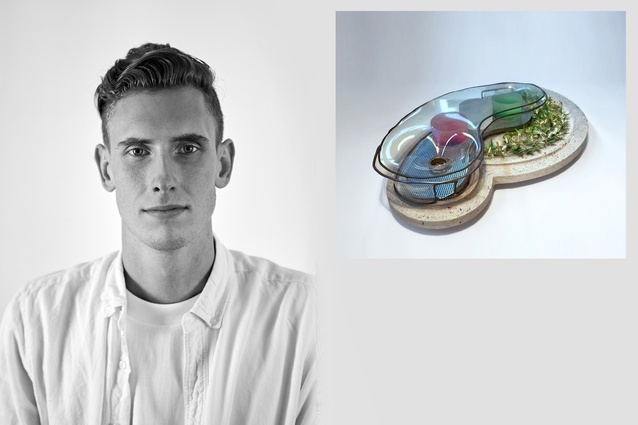Winners announced: 2017 Interior Awards
The 2017 Interior Awards were announced on Thursday 29 June at the Metropolis Museum in Auckland, with over 300 interior designers and architects coming together for the highly sociable awards and networking evening. The awards have been recognising excellence in New Zealand commercial interior design innovation for five years.
The awards were presented across nine main categories: Retail, Hospitality, Workplace (up to 1,000m2), Workplace (over 1,000m2), Civic, Installation, Craftsmanship, Emerging Design Professional and Student.
The jury for 2017 comprised five industry professionals: Dean Mackenzie, Toni Brandso, Bill McKay, Lauren Hare and Federico Monsalve.
Jury convenor Monsalve says, “This year’s Interior Awards were marked by an emphasis on detail. We were honoured to judge a myriad of projects whose designers considered even the smallest functional and aesthetic questions within their projects and resolved them with confidence and flair. There is an undeniable maturity within the industry and it is exciting to see what 2018 has in store for us.”
SUPREME & HOSPITALITY AWARD
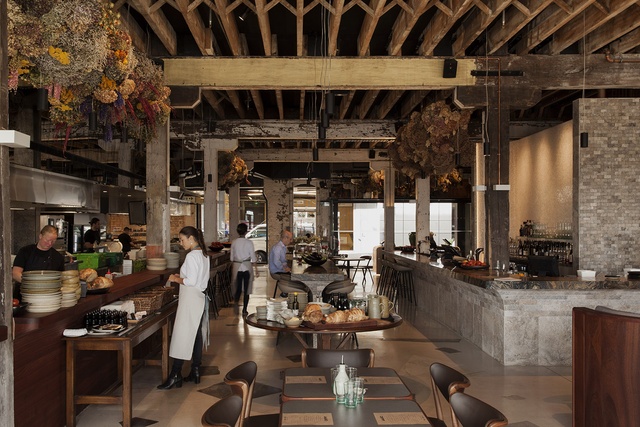
The sumptuous Amano by McKinney + Windeatt Architects was the big winner on the night, taking home the coveted Supreme Award and also winning the Hospitality category.
Occupying the ground floor of two heritage buildings in Britomart, the large floor area was designed as a sequence of intimate spaces. This Italian restaurant and bakery celebrates the hand-made and features unique materials paired with carefully selected furniture. Attention to detail in each aspect of this careful, highly crafted interior is outstanding, with the luminous, back-lit mother of pearl counters one of the many highlights. The judges said, “A daring yet sensitive response to a large and somewhat impersonal and cavernous locale, resulting in a charming, beguiling interior that is well suited to its client and users.”
RETAIL AWARD

Patterson Associate’s considered fit out of the Aesop Newmarket store won the Retail Award. Inspired by an old Kiwi colonial washroom, this space for the retail chain that specialises in body-care products is quiet and considered, with a reduced palette of materials that successfully celebrates the domestic rituals of washing. The rimu flooring brings warmth to the otherwise minimal space, while the recycled concrete double basins recall an earlier, informal New Zealand way of life. The jury commented, “It is intimate and elegant, meticulous and sophisticated with a simple, bright idea as its basis. This space proves that a singular clear concept can often be stronger than large operatic solutions”.
WORKPLACE (UP TO 1,000M2) AWARD

The Workplace up to 1,000m2 Award was handed to Strachan Group Architects for the SGA Studio and Workshop, a multidisciplinary hub that is a workspace for architects, builders, landscape architects and joiners. According to the jury, the warm, bright workplace is “equal parts celebration of the built environment and an impressive business card for the craft of its inhabitants”. Designed around ideas of sustainable design and to celebrate SGA’s passion for modern, efficient construction techniques, the space caters to a variety of activities. Simple, natural materials have been left exposed, and some of the interior shelving and window modules were so highly crafted that they warranted a finalist position in this year’s Craftsmanship category.
WORKPLACE (OVER 1,000M2) AWARD

Warren and Mahoney took home the Workplace over 1,000m2 Award on the night for the highly innovative, futuristic TVNZ Television Network Centre Refurbishment in Auckland. This “Blade Runner-inspired media city in the sky” was created to support the media agency moving into a digital era, with the concept of an ‘Open and Live’ environment that included a focus on high transparency, communicated through aspects such as open plan working and visibly connected operations and spaces. The jury praised the project’s “restrained industrial palette which – mixed with bold colours, nods to the entertainment industry and an urbane New Zealand subtext – were contextual and respectful of the architecture and its central location.”
CIVIC AWARD
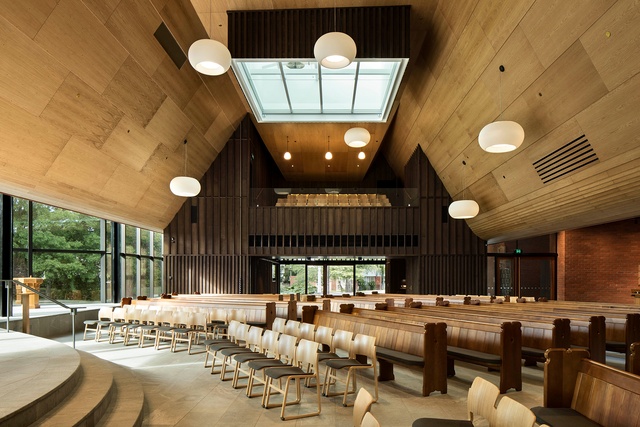
Always a highly contested category, this year the elegant, striking Saint Andrews College Centennial Chapel, designed by Architectus, came away with the Civic accolade. Seamlessly merging the old with the new, the chapel features a folded glass screen that stands in direct contrast with the salvaged brick and stone memorial wall inside, while the roof form recalls the first church buildings in Canterbury; the ‘V-huts’. The jury thought this project “an exquisite chapel that honours the past while looking at the future and does so in an innovative and humanist design that is certain to nurture its congregation for generations to come”.
INSTALLATION AWARD
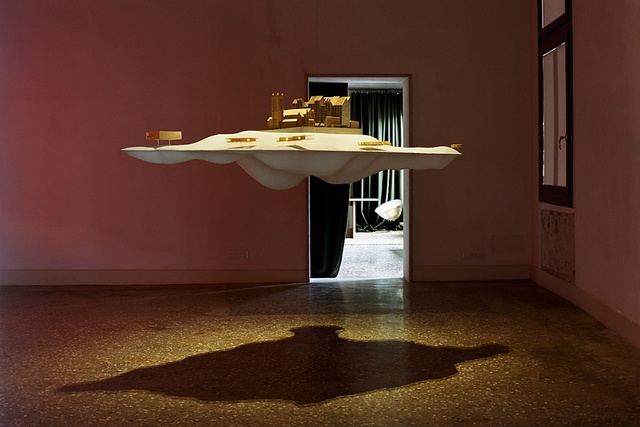
The New Zealand pavilion at the 2016 Venice Architecture Biennale by Future Islands won the Installation Award. At once atmospheric, immersive and challenging, this world class exhibition excelled at telling stories about New Zealand and our architecture overseas while also achieving a cutting-edge level of design technology. Linking knowledge, imagination and technology, the exhibition “took into consideration a highly varied audience, complex logistics and schedules, as well as a refreshing lyricism and depth,” according to the judges. The pavilion also eloquently responded to the overall theme of the Biennale, ‘Reporting from the Front’, on the social role of architecture.
CRAFTSMANSHIP AWARD

This year’s Craftsmanship Award was conferred to Luke Scott with Clark Bardsley Design for the highly tactile Commensality. As part of the launch of design publication Stemme’s second issue, an interactive sculpture was created around the magazine’s theme, commensality – the act of eating or sharing around a table. ‘An investigation of the idea of table-ness’, the surface is made up of 2,565 carbon fibre tubes spaced over a 40 mm grid that creates the illusion of movement and light. “This is a deceptively simple object that conceals a complex process of craftsmanship. A high degree of detailed design, material sourcing, prototyping and even the creation of special tools was needed to create this unique and sculptural installation,” commented the jury.
EMERGING DESIGN PROFESSIONAL AWARD
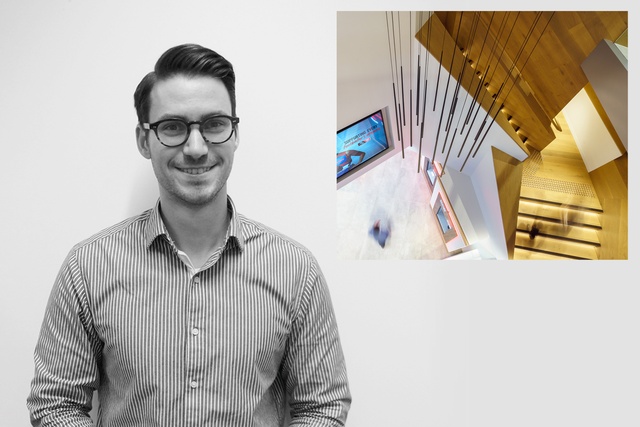
David Hoad of Warren and Mahoney has won the Emerging Design Professional Award. While he is the youngest of the finalists with the least experience, he impressed the judges with his detail-focused, complex work on a variety of projects. Hoad states, “I am drawn to the influence an interior has on experiences and approach design from a human scale. My ambition is to create emotive environments that align with our client’s aspirations”. The judges noted that, “Hoad incorporates a calm and relaxed demeanour with a noticeable passion for his craft. He has demonstrated incredible growth potential in his design work in the retail banking sector with a reinvention of the typology that has since gone on to become the standard throughout New Zealand and Australia”.
STUDENT AWARD
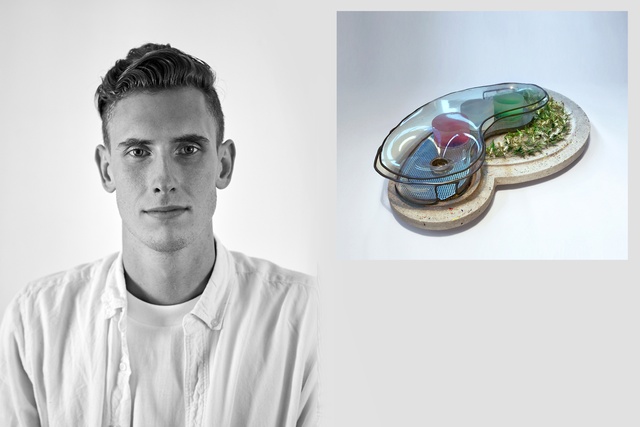
Up against a group of strong contenders, Elliott Morgan of the University of Auckland took home the 2017 Student Award for his ambitious project Morphosis of Social Conscience, which looks at how the design of special programmes and spaces can address and impact our current mental health crisis. An experimental, humanistic project, the judges found that although the design was not without areas of critique, the exploratory programme pushed boundaries while also demonstrating what is desirable in student work: “an ambition to use design to create innovative, humane solutions to the problems of the world, beyond the pragmatics of the quotidian”.
Extended coverage and full jury citations for the 2017 Interior Awards winners can be found in the June 2017 issue of Interior magazine.
With thanks to our 2017 sponsors:


